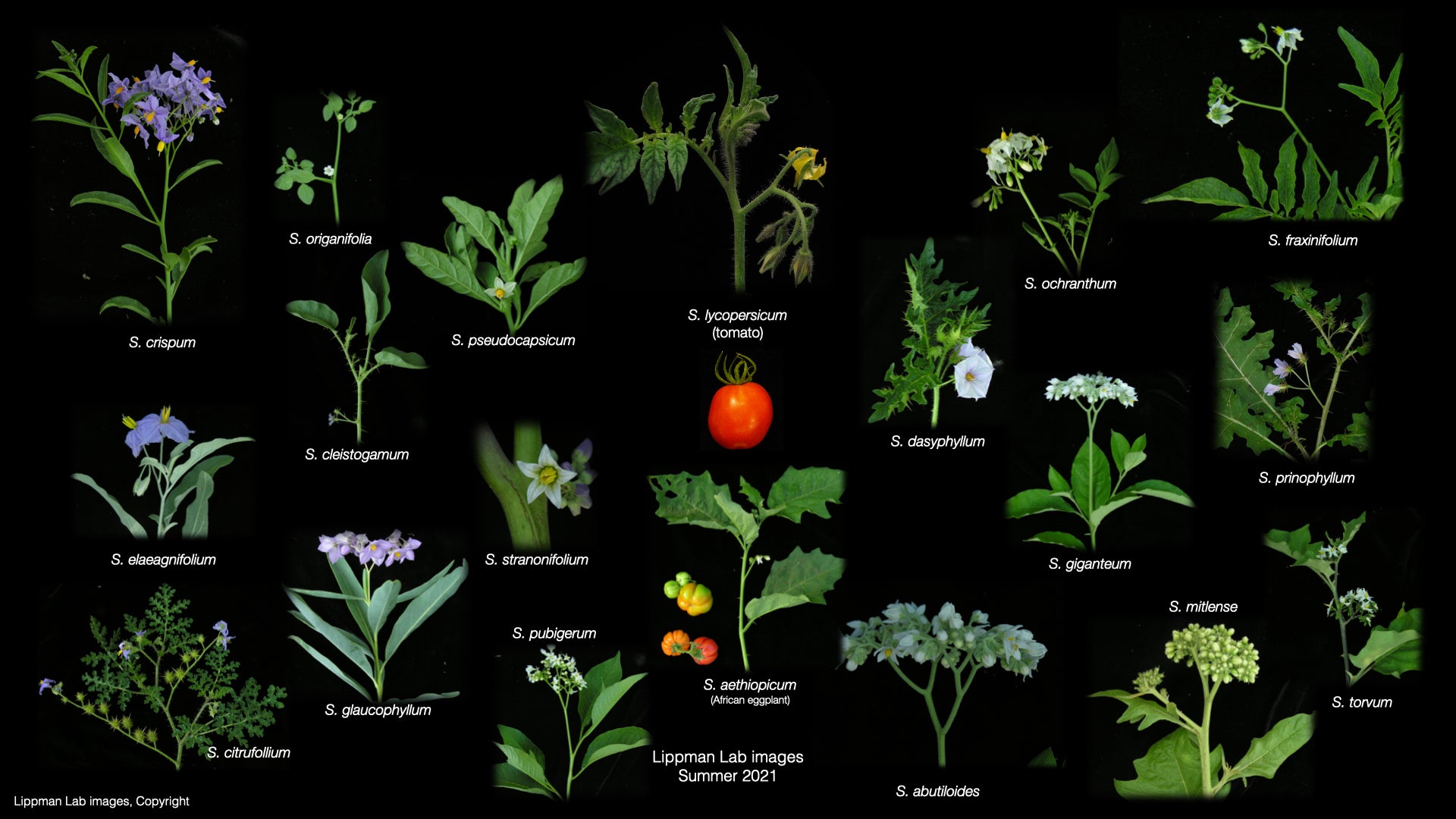Our lab uses the biology of plant architecture, flowering and flower production to elucidate the genetic and molecular mechanisms underlying quantitative trait variation. Our emphasis is on understanding relationships between genes and their variants, and how individual and different combinations of natural and engineered mutations influence the control of gene expression and epistatic interactions between genes. We use tomato and related species in the Solanaceae family as model systems, supplemented with the classical system Arabidopsis. Using our continuing establishment of chromosome-scale reference genomes in the Solanaceae as a foundation, we use a range of genome-editing technologies to generate libraries of targeted mutations in both coding and cis-regulatory sequences of gene families that control the production and maturation of shoot meristems. Regenerating stem cell populations in shoot meristems enable continuous development of new vegetative and reproductive shoots, flowers and fruits. We have identified many of these stem cell regulating genes and their downstream targets, and we are using genome editing to modify the function of these genes, individually and together, to engineer continuums of quantitative trait variation. Beyond our fundamental questions, we are translating our discoveries to agriculture by showing how natural and engineered genetic diversity can be used in crop breeding, including to elevate poorly studied semi-domesticated crops and edible wild species that are relatives of the few major crops that feed the world. By dissecting the complexity of gene-gene interactions and gene expression control, we are expanding our understanding of genotype-to-phenotype relationships in a major plant family, thereby establishing broadly applicable principles and approaches to allow the rational design of engineered trait variation in other plant taxa of both fundamental and agricultural importance.



